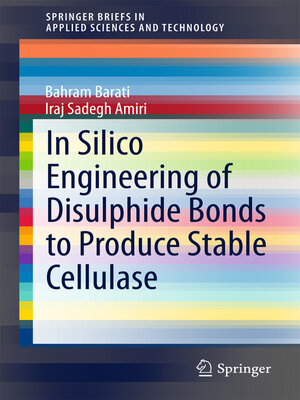In Silico Engineering of Disulphide Bonds to Produce Stable Cellulase
ebook ∣ SpringerBriefs in Applied Sciences and Technology
By Bahram Barati

Sign up to save your library
With an OverDrive account, you can save your favorite libraries for at-a-glance information about availability. Find out more about OverDrive accounts.
Find this title in Libby, the library reading app by OverDrive.



Search for a digital library with this title
Title found at these libraries:
| Library Name | Distance |
|---|---|
| Loading... |
This Brief highlights different approaches used to create stable cellulase and its use in different fields. Cellulase is an industrial enzyme with a broad range of significant applications in biofuel production and cellulosic waste management. Cellulase 7a from Trichoderma reesei is the most efficient enzyme in the bio hydrolysis of cellulose. In order to improve its thermal stability, it can be engineered using a variety of approaches, such as hydrophobic interactions, aromatic interactions, hydrogen bonds, ion pairs and disulfide bridge creation.







